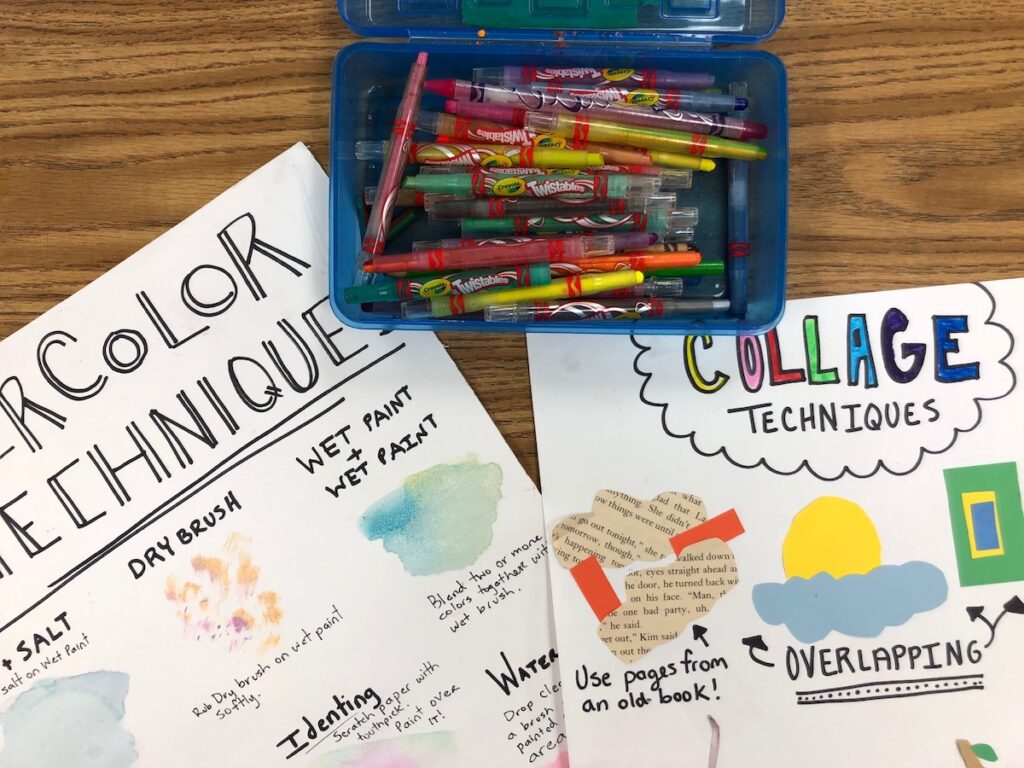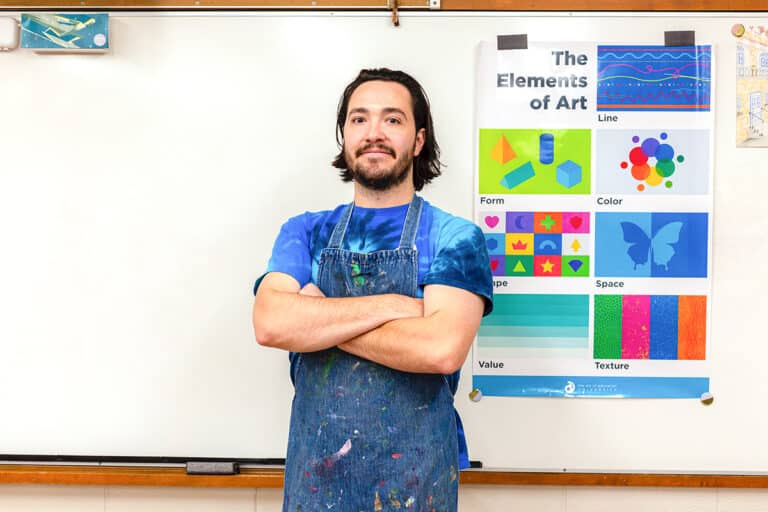Teaching is a rewarding career, but it also can be extremely stressful. Finding the time to share and talk with other art teachers in your district might be on the bottom of your list. But, it is a priority we should move to the top. Art teachers are typically the minority in most schools, and it can be hard to find support specific to our needs. Also, the feeling of isolation is a serious issue and has led to high turnover rates within many schools.
To help fix this issue, collaboration is necessary. Finding ways to connect with other local art teachers in your district is a smart place to start. You also share common goals because you all follow your district’s mission and standards.
Check out these 4 reasons why you should meet with other art teachers in your district.
1. To Gain Support
Having adequate support in any career is huge. As an art teacher, the long days can be draining. It’s important to have people you can talk to, especially those who identify with your specific set of issues. It is great to have peers at your school, but art teacher peers can understand some of the things that others will not. For instance, if I am having trouble organizing my room in a way to store art for 500 students, my art peers can support me best. Valuable information from someone in your shoes is priceless.

2. To Share Ideas
We teach a variety of mediums, processes, techniques, and life skills. Sharing ideas about curriculum, classroom management, classroom organization, and more is key to our growth as art teachers. Sharing and being open to feedback and new ideas benefits everyone, including your students.
Here are a few ways to connect with art teachers in your district.
- Use a shared Google doc
- Start an email thread
- Create a private Facebook group
- Hold virtual meetings on Google Hangout or Skype
- Meet once a month off campus
- Meet once a month on each other’s campuses
- Observe each other teaching
I have done all of these things to connect with art teachers in my district. In each instance, I am so glad I made the time to do so. I have learned so many useful tips for improving classroom management, organization, and student learning in my classroom.

3. To Advocate within Your District
Advocacy is one important to reason to get to know other art teachers in your district. You can come together to promote the arts in positive ways for your greater community. Your district may have measures in place like mandatory district art shows. But, how about working with one or more art teachers in your district to come up with ways to promote the arts in creative, collaborative ways? This way, the heavy load of planning shows and installations is lessened.
Here are a few ways to promote arts with other art teachers in your district:
- Create installations in training centers and administrative buildings
- Hold art shows out in the community at places like restaurants and hospitals
- Put together a district-wide outdoor art festival
- Hold an art show reception for select work
- Put on a district-wide art show

4. To Build Relationships
Talking to like-minded individuals will not only help you both professionally and personally. Connecting with other art teachers can lead to new friendships. Personally, I have an “art teacher bestie” from my district. We hang out often and do artsy things together like create anchor charts for our classrooms, go to art museums, and have lunch. If you find a good friend, they can go to art conferences with you, too!
These types of relationships are important. They know exactly where you’re coming from and are always a text or email away. I am grateful the district I am in promotes collaboration. But, I am even happier I make the time to nurture these relationships.
All in all, make sure you find time to connect with art teachers in your district. It will help you in so many ways! Take the first step and send an email to other art teachers to see who would be interested in meeting up!
How do you build relationships with other art teachers in your district?
Does your district provide opportunities for you to share ideas with other art teachers?
Magazine articles and podcasts are opinions of professional education contributors and do not necessarily represent the position of the Art of Education University (AOEU) or its academic offerings. Contributors use terms in the way they are most often talked about in the scope of their educational experiences.





